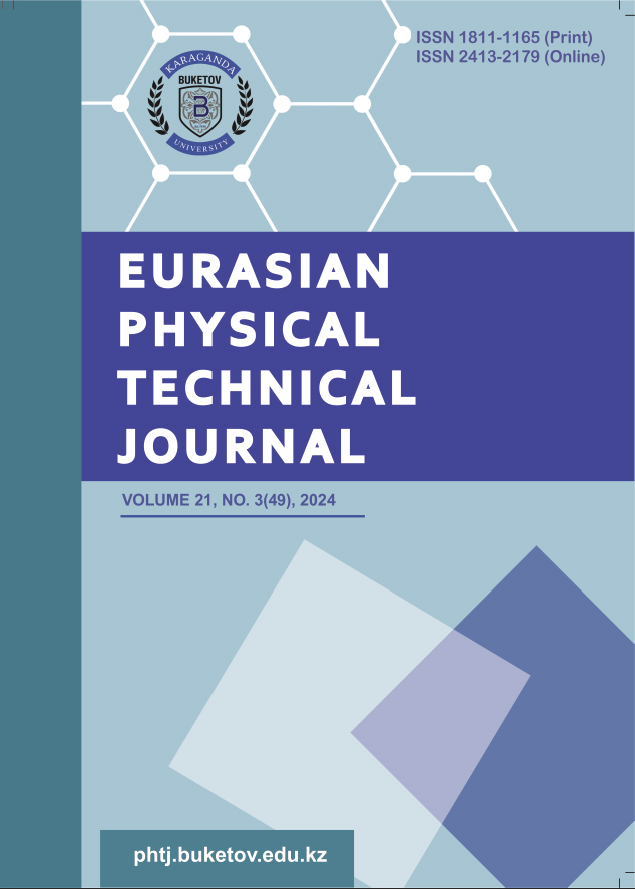Остаточные поля напряжений и температур при испытаниях поверхности: конечно-элементный анализ.
DOI:
https://doi.org/10.31489/2024No3/132-139Ключевые слова:
метод конечных элементов, информационные технологии, точность, напряженно-деформированное состояниеАннотация
Многочисленные достижения были достигнуты в обработке поверхности деталей, однако наличие поверхностных дефектов, возникающих в результате финишных процессов, вызвало опасения относительно их потенциальной возможности служить концентраторами напряжений. Для решения этой проблемы в настоящем исследовании использовались возможности метода конечных элементов и передовые программные приложения. Основная цель исследования — оценить состояние напряжений и деформаций поверхностей материалов после финишной обработки, используя комплексные возможности, предлагаемые этими программными системами. Значительный компонент исследования был сосредоточен на влиянии нестационарных температурных полей, отслеживаемых динамическими термоэлементами, на динамику напряжений и деформаций внутри поверхностей материалов. Методы визуализации использовались для отображения указанных полевых функций, выявляя заметные изменения в распределении температур. Результаты показали, что стандартная функция определила область самой высокой температуры в сегменте узлов 3-7-4, в то время как альтернативная функция определила ее в сегменте узлов 4, обозначенном красной областью. Эти результаты подчеркивают важную роль нестационарных температурных полей в балансировке механических и физических аспектов процесса отделки. Это исследование вносит значительный вклад в понимание напряженно-деформированного состояния поверхностей материалов после отделки, подчеркивая потенциальные преимущества использования современных программных систем для углубленного исследования.
Библиографические ссылки
Nosov N.V. (2018) Application of quasi-optimal correlation algorithm for surface quality assessment. Journal of Physics Conference Series, 1096, 012141–012141. DOI: 10.1088/1742-6596/1096/1/012141.
Snehashish Chakraverty, Deepti Moyi Sahoo, Nisha Rani Mahato. (2019) Defuzzification. Springer EBooks, 117–127. DOI: 10.1007/978-981-13-7430-2_7.
Ortwin Farle, Hill, V., Pär Ingelström, Romanus Dyczij-Edlinger. (2008) Multi-parameter polynomial order reduction of linear finite element models. Mathematical and Computer Modelling of Dynamical Systems, 14(5), 421–434. DOI: 10.1080/13873950701844220.
Nawijn M., van Tooren M.J.L., Berends J. P. T. J., Arendsen P. (2006) Automated Finite Element Analysis in a Knowledge Based Engineering Environment. 44th AIAA Aerospace Sciences Meeting and Exhibit. DOI:10.2514/6.2006-947.
Guitart M. (2022) Behind Architectural Filters. DOI: 10.4324/9781003208624.
Pavlenko D., Kondratiuk E., Torba Y., Vyshnepolskyi Y., Stepanov D. (2022) Improving the efficiency of finishing-hardening treatment of gas turbine engine blades. Eastern-European Journal of Enterprise Technologies, 1(12(115)), 31–37. DOI: 10.15587/1729-4061.2022.252292.
Kayabekir A.E., Toklu Y.C., Bekdaş G., Nigdeli S.M., Yücel M., Geem Z.W. (2020) A Novel Hybrid Harmony Search Approach for the Analysis of Plane Stress Systems via Total Potential Optimization. Appl. Sci., 10(7), 2301. DOI: 10.3390/app10072301.
Zobov V.A., Chernousov D.A. (2021) Analysis of the Technology of Automation of Surface Layer Quality Management during Turning. Russian Metallurgy (Metally), 2021(13), 1814–1820. DOI:10.1134/s003602952113036x.
Stern M., Soni M.L. (1976) On the computation of stress intensities at fixed-free corners. International Journal of Solids and Structures, 12(5), 331–337. DOI: 10.1016/0020-7683(76)90023-8.
Machado A., Soares C., Reis B., Bicalho A., Raposo L., Soares P. (2017) Stress-strain Analysis of Premolars With Non-carious Cervical Lesions: Influence of Restorative Material, Loading Direction and Mechanical Fatigue. Operative Dentistry, 42(3), 253–265. DOI: 10.2341/14-195-l.
Burley M., Campbell J.E., Reiff-Musgrove R., Dean J., Clyne T.W. (2021) The Effect of Residual Stresses on Stress–Strain Curves Obtained via Profilometry-Based Inverse Finite Element Method Indentation Plastometry. Advanced Engineering Materials, 23. DOI:10.1002/adem.202001478.
Liu C.R., Guo Y.B. (2000) Finite element analysis of the effect of sequential cuts and tool–chip friction on residual stresses in a machined layer. International Journal of Mechanical Sciences, 42(6), 1069–1086. DOI:10.1016/s0020-7403(99)00042-9.
Contreras H.(1980) The stochastic finite-element method. Computers & Structures, 12(3), 341–348. DOI: 10.1016/0045-7949(80)90031-0.
Zienkiewicz O.C., Morice P.B. (1971) The Finite Element Method in Engineering Science. McGraw-Hill, London. https://scholar.google.com/scholar_lookup?&title
David Müzel S., Bonhin E. P., Guimarães N. M., Guidi E.S. (2020) Application of the Finite Element Method in the Analysis of Composite Materials: A Review. Polymers, 12(4), 818. DOI: 10.3390/polym12040818.
Doudkin M.V., Kim A., Kim V., Mlynczak M., Kustarev G. (2018) Computer Modeling Application for Analysis of Stress-strain State of Vibroscreen Feed Elements by Finite Elements Method. Proceeding of the Intern. Conf. on Computational and Information Technologies in Science, Engineering, and Education, Ust-Kamenogorsk, Kazakhstan, 82-96. DOI: 10.1007/978-3-030-12203-4_9.
Shukla S., Meena Murmu, Deo S.V. (2022) Study on Fracture Parameters of Basalt Fiber Reinforced Concrete Beam by Using Finite Element Method. Lecture Notes in Civil Engineering, 33–45. DOI:10.1007/978-981-16-8433-3_5.
Campaner L.M., Silveira M.P.M., de Andrade G.S., Borges A.L.S., Bottino M.A., de Oliveira Dal Piva A.M., Giudice R.L., Ausiello P., Tribst J.P.M. (2021) Influence of Polymeric Restorative Materials on the Stress Distribution in Posterior Fixed Partial Dentures: 3D Finite Element Analysis. Polymer, 13 (5), 758; DOI:10.3390/polym13050758.
Topchyi D. (2016) The theory of plafales:quadruple role of the basis functions of serendipity finite elements. Review of the results. Scientific Works of Vinnytsia National Technical University, 2, 1 – 7. https://hal.science/hal-01429000/document.














